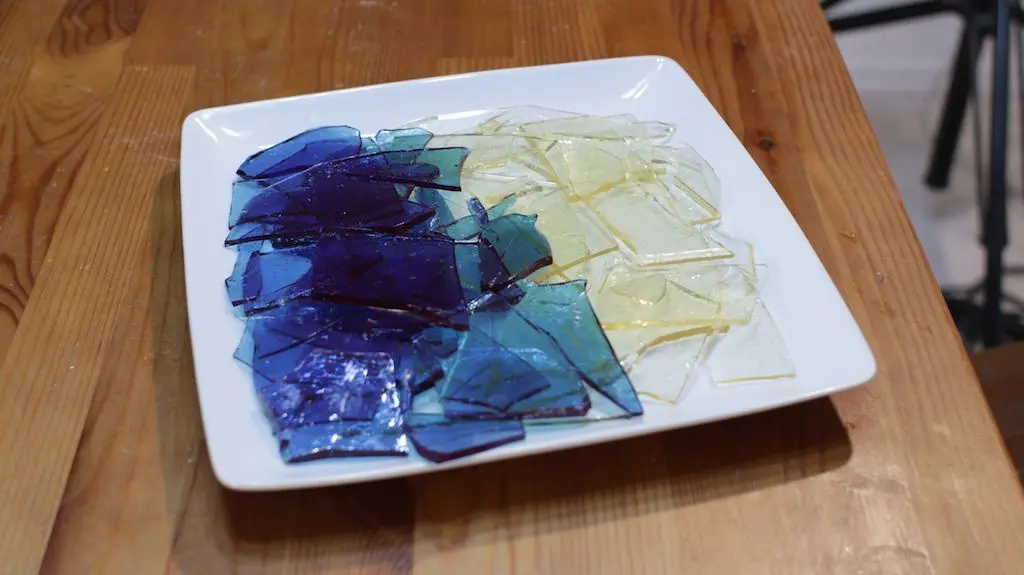Sugar glass, also known as edible glass, is a fascinating confectionery creation that mimics the appearance of real glass. It is commonly used in movies, theater productions, and creative dessert decorations. Whether you’re making candy windows, decorative cake toppers, or special effects for a project, sugar glass is an impressive and fun medium to work with. In this guide, we’ll explore what sugar glass is, how to make it, and creative ways to use it.
What Is Edible Sugar Glass?
Edible sugar glass is a hardened, transparent sugar mixture that resembles real glass. Unlike standard glass, which is made from silica, sugar glass is made from a combination of sugar, water, corn syrup, and cream of tartar. It can be broken easily without causing injury, making it a popular choice in film production for stunt scenes where characters break “glass” objects.
Aside from theatrical uses, sugar glass is also widely used in baking and confectionery arts to create beautiful decorations for cakes, cupcakes, and candies. It can be colored and flavored to match any theme or occasion.
Ingredients and Tools Needed to Make Sugar Glass
Making sugar glass requires a few basic ingredients and tools that you may already have in your kitchen. Here’s what you’ll need:
Ingredients:
- 2 cups granulated sugar
- 1 cup light corn syrup
- 1/2 cup water
- 1/4 teaspoon cream of tartar (optional but helps prevent crystallization)
- Food coloring (optional)
- Flavoring extracts (optional, such as vanilla or mint)
Tools:
- Medium saucepan
- Candy thermometer
- Baking sheet or silicone mold
- Parchment paper or silicone mat
- Spatula
- Measuring cups
- Heat-resistant gloves
Step-by-Step Guide to Making Sugar Glass
Follow these steps carefully to make clear, breakable sugar glass:
Step 1: Prepare Your Work Surface
Start by lining a baking sheet with parchment paper or a silicone mat. This will prevent the sugar glass from sticking once it hardens. If using a mold, lightly grease it with cooking spray.
Step 2: Combine Ingredients
In a medium saucepan, combine sugar, corn syrup, water, and cream of tartar. Stir the mixture over medium heat until the sugar dissolves completely.
Step 3: Heat to the Right Temperature
Attach a candy thermometer to the saucepan and continue heating the mixture without stirring. Allow it to reach 300°F (149°C), also known as the hard crack stage. This is the ideal temperature for achieving a brittle texture that mimics real glass.
Step 4: Add Color and Flavor (Optional)
Once the sugar mixture reaches 300°F, remove it from heat immediately. If you want to add color or flavor, do so at this stage and stir gently.
Step 5: Pour and Cool
Carefully pour the hot sugar mixture onto your prepared baking sheet or mold. Spread it evenly and allow it to cool at room temperature for about an hour until completely hardened.
Step 6: Break and Use
Once hardened, gently tap the sugar glass with a spoon or rolling pin to break it into shards. Store the pieces in an airtight container until ready to use.
Creative Uses for Edible Sugar Glass
Sugar glass can be used in numerous ways for both decorative and practical purposes. Here are some exciting ideas:
1. Cake and Cupcake Decorations
Sugar glass makes a stunning addition to cakes and cupcakes. You can create shards that resemble ice, stained glass, or gemstones to enhance the visual appeal of your baked goods.
2. Halloween and Themed Treats
For spooky-themed desserts, red-colored sugar glass can be used to resemble broken glass in a “bloody” candy effect. It’s a popular decoration for Halloween treats.
3. Candy Windows and Structures
Sugar glass can be used to create edible windows for gingerbread houses or other decorative candy structures. It adds a realistic touch to edible architecture.
4. Movie and Theater Special Effects
Because sugar glass is safe to break, it is widely used in movies and stage productions for smashing bottles, windows, or glasses without real danger to actors.
5. Edible Stained Glass Art
You can experiment with different food colorings to create beautiful edible stained glass art. Pouring multiple colors together and swirling them before hardening can produce unique, vibrant patterns.
Troubleshooting Tips for Perfect Sugar Glass
If you run into problems while making sugar glass, here are some common issues and solutions:
- Sugar Crystallization: If your sugar starts forming crystals before reaching 300°F, add a little extra corn syrup or cream of tartar to prevent it.
- Bubbles in the Glass: Stirring too much or heating too quickly can cause air bubbles. Heat the mixture gradually and avoid unnecessary stirring.
- Sticky Sugar Glass: If the sugar glass remains sticky even after cooling, it may not have reached the hard crack stage. Make sure to use a candy thermometer to reach 300°F.
- Softening Over Time: Sugar glass can absorb moisture from the air and become sticky. Store it in an airtight container with silica gel packets to prevent this.
Safety Precautions When Handling Sugar Glass
- Sugar glass becomes extremely hot while cooking. Always use heat-resistant gloves when handling the saucepan.
- Pour the mixture carefully to avoid burns.
- Keep children away from the cooking process, as the sugar mixture can cause severe burns if spilled.
Conclusion
Edible sugar glass is an exciting and versatile creation that enhances desserts, decorations, and even theatrical effects. With just a few ingredients and some careful handling, you can create beautiful and realistic sugar glass for various applications. Whether you use it for cakes, themed treats, or movie effects, mastering the art of sugar glass opens up a world of creative possibilities. Try making your own today and explore the endless ways to use this fascinating edible material!

Leave a Reply